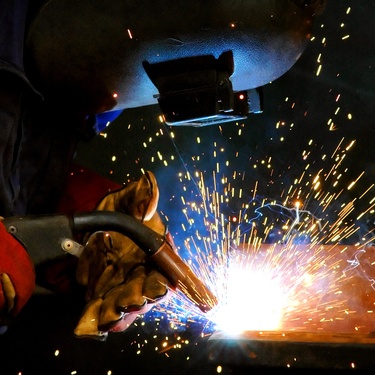
Welding generates intense heat, which is essential for fusing metals. However, improper heat control can weaken welds, damage materials, and potentially impact worker safety. Effectively managing these factors affects the quality and longevity of the materials you're working on.
Preventing Visible Damage in the Finished Product
When heat is applied unevenly or excessively, metals can bend, crack, or lose their structural integrity. This is the main reason why heat management is important in welding. Heat causes expansion, and as metals cool, they contract. For instance, in thinner sheets of metal, even slightly excessive heat can result in visible distortions, influencing the final product’s functionality.
Proper heat management during welding prevents these issues and keeps materials in their best shape.
Strengthening Weld Quality
Extended periods of high heat weaken the bond strength at the weld joint. Excess heat can also introduce impurities into the weld.
Keeping your temperatures in check ensures a solid, defect-free weld every time. This is particularly important in techniques such as orbital fusion, which require precise control to avoid weakening the structure. Balanced heat levels maximize weld durability and accuracy.
Monitoring Heat-Affected Zones
As you’re welding, you’re focusing on the heat-affected zone (HAZ)—the section of the material just outside the weld pool. Overheating can create brittle sections in this area.
Controlling temperatures limits the size of the HAZ and preserves the metal’s properties. Simple techniques such as intermittent welding or letting the material cool before additional passes can make a difference in protecting this critical section.
Protecting Material Properties
Heat changes the internal structure of metal. Understanding material metallurgy impacts in orbital fusion and other processes is essential for working with metals, as their reactions depend on their unique compositions.
For example, materials such as stainless steel can harden excessively if they cool too quickly, while aluminum might warp if temperatures rise too high. These changes affect the weld’s functionality and longevity, so welders must manage them during the process.
Proper heat management minimizes disruptions to a material’s natural properties. Regulating the temperature and controlling the cooling helps welded components keep their intended shape intact, which increases their durability.
Your welding technique and ability to manage heat directly affects the strength, appearance, and durability of your work. Now that you know why heat management is important in welding, you can effectively execute each project safely and consistently to achieve the best results. Practice regularly to refine your skills and learn how different equipment can aid your efforts.
Bio: Casey is a passionate copyeditor highly motivated to provide compelling SEO content in the digital marketing space. Her expertise includes a vast range of industries from highly technical, consumer, and lifestyle-based, with an emphasis on attention to detail and readability.




















